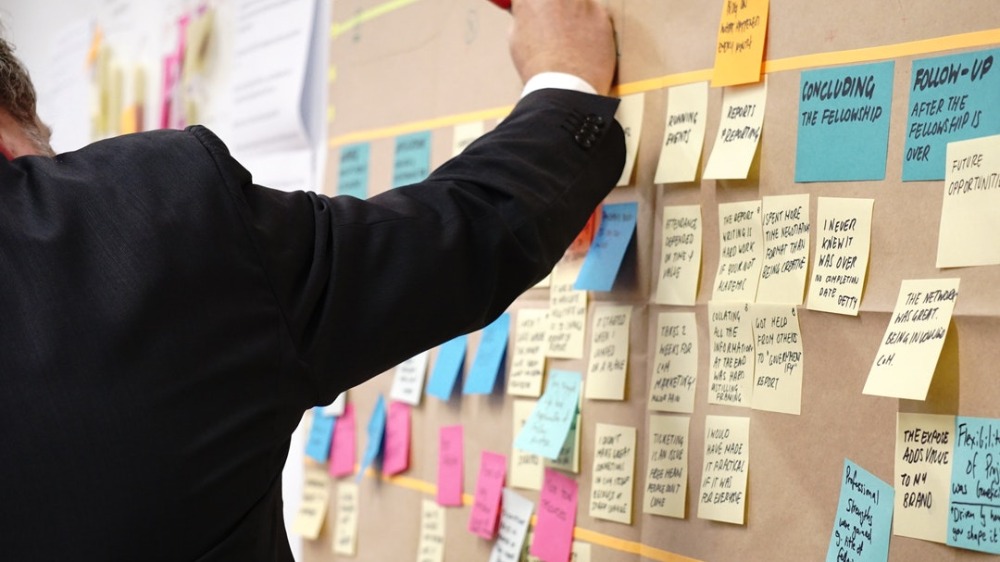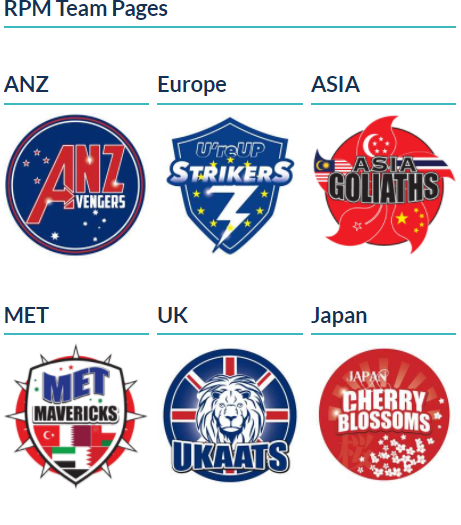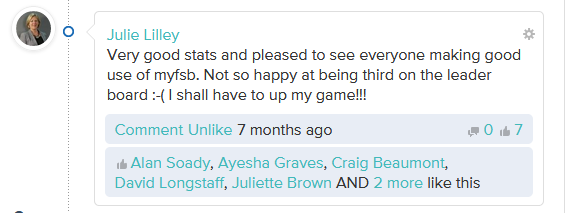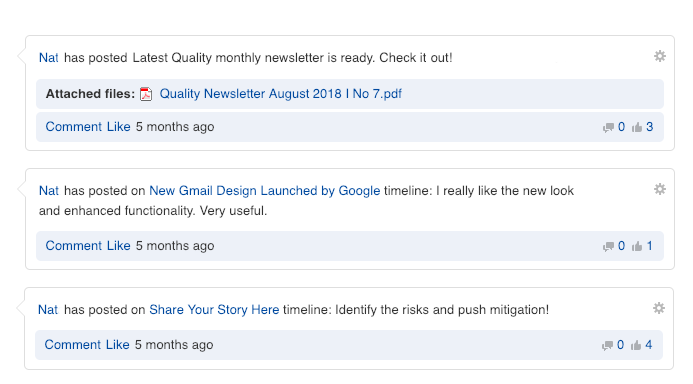Have you included this key ingredient in your intranet project?

All you need to know the key ingredient to make your intranet project successful.
Is there such a thing as the perfect intranet project? Probably not. Each intranet journey has its own unique set of problems, obstacles and issues. But while every project requires organization, hard work, and preparation to build, launch and subsequently manage an intranet, there is another element that many organizations miss out. And it could be the difference between your intranet project failing or succeeding.
When you’ve been given the responsibility of building your organization’s intranet, there is a lot to take on. While you may have the perfect strategy and the right people on board to help you, you could be missing out on a vital ingredient.
Download the Interact Excellence Awards Annual 2019 today
Stakeholder approval is critical to your intranet project, and if you don’t have senior, influential figures onboard from the outset, you may see the adoption and engagement of your system suffer.
To understand the importance of getting stakeholder support with your intranet project, we’re going to outline the many benefits of their involvement. We’ll provide real-life examples of customers who used the influence and resources of senior staff to make their intranets the success that they continue to be today.

The importance of stakeholder engagement cannot be underrated. In fact, before you even develop your strategy, the support of key individuals at the higher end of the hierarchy should be attained. Think of them in terms of building a house. If you are the architect, and your strategy is the building plan, then your stakeholders are the foundations that will make sure your intranet has a firm, solid footing within your organization.
The 2019 Interact Excellence Awards have highlighted some examples of how stakeholder support and engagement really define an intranet project. From simple approval and decision-making to being the standard bearer of the system for the whole organization – support from the top is one of the things your intranet project definitely needs.
Stakeholders as a group
One of the main jobs of a stakeholder is to champion your system to the rest of the business. And those stakeholders can be one central figure, or a team of managers. It’s what works best for your organization.
One lesson that foreign exchange provider Travelex found out was while the CEO is an important figurehead for any intranet project, it’s the daily presence of managers and senior staff that are integral to sustaining the momentum of the intranet.
Download the Interact Excellence Awards Annual 2019 today
The managers took it upon themselves to use the various tools on their intranet, The Lounge to provide information and interact with employees. By doing this, they were given the green light to the whole of the organization to take part, learn from and share knowledge on this central resource. And it’s the enterprising way they did this that helped them win Best Stakeholder at the Interact Excellence Awards.
The Gamification and Performance Innovation Director, for example, was key to the creation of RPM World – the business’s global sales incentive program. This is a league that pits the many countries that Travelex operates in against each other. By introducing a friendly competition, it allows everyone involved to take a keen interest in performances, targets and progress.

Gamification is a huge trend, and those people behind RPM World has deployed this extremely effectively. Gamification not only grabs the interest of the user but lays out goals, challenges, and achievements in a way that is beneficial for the company, both culturally and financially. Thanks to the Gamification and Performance Innovation Director – sales updates are a major part of the intranet, with through-the-roof engagement from employees who check up on their performances and take part in friendly banter with colleagues in other countries. This has transformed how the global workforce uses the intranet.
Stakeholder engagement, in this instance, has allowed colleagues to learn from those examples set by senior management. Both the stakeholders and the project team have used their intranet to remove cultural blockers, bridge the gaps created by silos, and enhance the user experience. These developments have making The Lounge a fundamental part of working life at Travelex.
Single-person stakeholding
That’s not to say the success of an intranet needs the full support of every single member of senior management. Often, it only takes a single key member of staff to promote the system for people to feel encouraged enough to embrace it.
Download the Interact Excellence Awards Annual 2019 today
In the case of Federation of Small Businesses (FSB), the workforce consists of fulltime colleagues, volunteers and self-employed sales staff. Without careful management, this unusual structure could easily lead to fragmentation, with remote workers, shift patterns and differing affiliations to the company. For FSB, intranet software had long been the proposed solution to this.
An earlier attempt at a platform to connect the workforce had already been built and subsequently discarded. Yet despite this unsuccessful SharePoint intranet, FSB’s CEO Julie Lillie wasn’t disheartened and was committed to seeing her vision through. With the help of Interact, they rebuilt their intranet, myfsb, and forged it to be the keystone of their digital workplace. With myfsb, they were determined to connect staff, share information and encourage a robust and positive workplace culture.

Because Lilley was the key figure in driving myfsb’s creation, she was the perfect candidate in promoting and encouraging the adoption of it. Her regular comments on posts, the likes and shares, and various endorsements of the features within myfsb has allowed the intranet to be recognized as a critical tool for the business as a whole.
While the success of myfsb down to a number of significant factors, the vision and drive of Julie Lilley is what has made its journey to becoming a go-to tool of the organization run as smoothly as possible. When businesses decide to implement an intranet, stakeholder support is crucial. It was thanks to Lilley that senior management was able to embrace the new system in the wake of the failed SharePoint intranet and help encourage employees to do the same.
But Lilley wasn’t just instrumental to the creation and driving adoption. Her role in the day-to-day use of the intranet – with her blogs and interaction with staff – encourages others to do the same. FSB carried out an internal communications survey last year, and Lilley’s activity on myfsb was one of the highlights of the feedback that many of the staff mentioned.

Using stakeholders to unite multi-language, global communities
Launching an intranet to connect and encourage communication among 15,000 employees speaking 35 different languages may sound like a tall order. Best stakeholder finalist in the Interact Excellence Awards WABCO, a global supplier of technologies and services for commercial vehicles, knew exactly what obstacles lay ahead. But they knew they were going to achieve this – not without the help of senior stakeholders, of course.
The size of the organization meant that senior leaders were immediately pinpointed as the indispensable factor towards @PACE’s success. The project team gave senior leaders the responsibility to champion employees who were displaying encouraged behaviours. Any display of knowledge sharing, collaboration, feedback providing and engaging with others is picked up by stakeholders and praised.
With this approach, you have active members of senior management on the intranet, and you have the recognition and appreciation of staff on a daily basis.

With the CEO leading the way with blogs and posts, executives followed suit using @PACE as an opportunity to reconnect and engage in conversations with team members. The Chief Quality Officer was also vocal in demystifying her job role by highlighting the benefits and sharing insights in to her work. Aside from teaching employees about a side of the business they might not necessarily know about, she also takes part in conversations and discussions online which aren’t always related to her scope.

As Joanna Szymanska, the Communications Leader at WABCO, explains: “We identified engagement as one of the critical success factors…. Invaluable throughout the entire process of launching the new intranet was the support the project team received from Vice President Communications and secured strong sponsorship from the CEO and the Leadership Team.”
What stakeholder support allows you do is that unquantifiable task of influencing and encouraging users to engage with the intranet.
While the project team can create great content, find innovative ways of transmitting it and hone its relevance to individuals, stakeholders can secure widespread engagement. By already having an understanding of the strategic value of the system, senior leaders will have an instinctive awareness of how they can use their influence and standing to remove cultural blockers to adoption, reduce the risk of problems like overspend, and enhance and develop the intranet in line with organizational objectives. They should be the champions of your intranet, and a critical element of your strategy from the very beginning.

